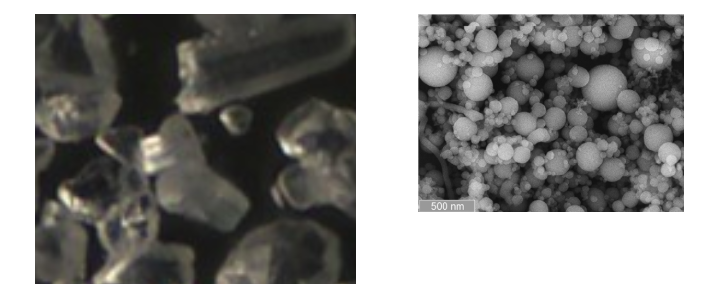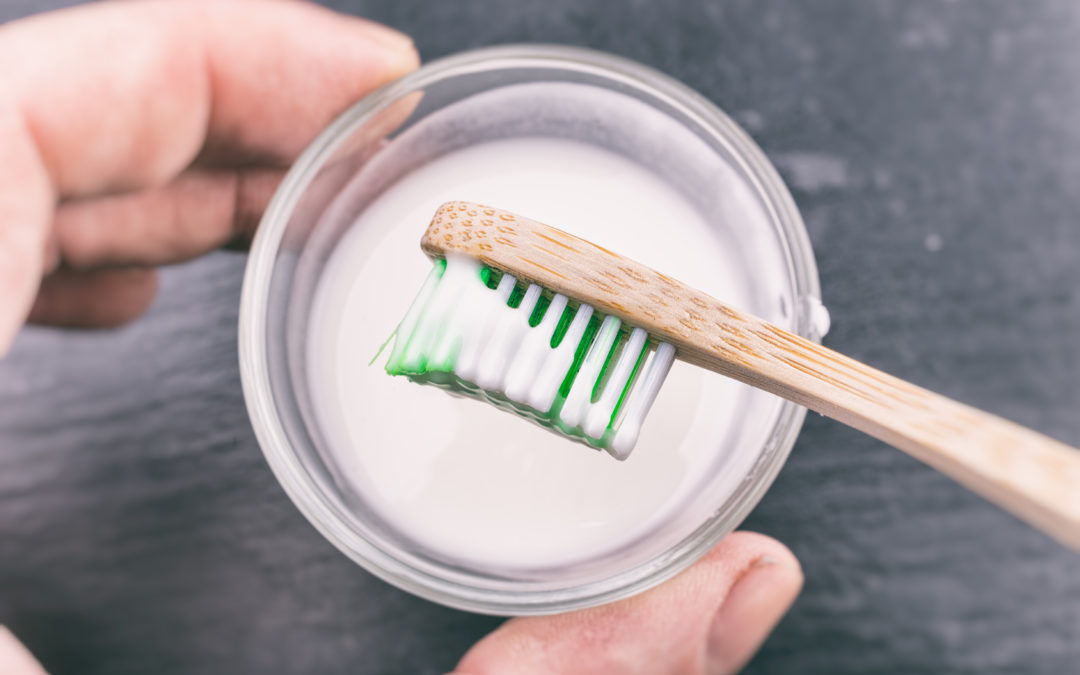Dr. Kurthy, Founder of KöR Whitening, Talks About Baking Soda and Teeth Whitening
First, let me say that I am very happy I was asked to comment on this article regarding whitening teeth with baking soda. The fact is that nearly all of the information you’ll commonly see on the internet about brushing your teeth with baking soda is entirely false and misleading. This blog will be longer than most, simply because there is so much VERY IMPORTANT information for you to know if you’re concerned about the health of your teeth, gums, and your smile.
Search the Internet regarding brushing your teeth or whitening your teeth with baking soda, and among other ridiculous things you’ll routinely see is the claim that “baking soda is VERY abrasive to use on your teeth – so if you use it, don’t use it every day.” Absolutely wrong! These statements are not only wrong, but they’re pretty much as wrong as you can get.
Baking soda (the stuff in the box in the supermarket) is, by far, the lowest abrasiveness of anything you would ever brush your teeth with. Here’s the problem – non-scientists writing articles based on assumption, and not proven fact. And once ONE person writes something, others quote him or her. Then when you have several people saying that same [false] thing, people state it and believe it as fact.
After all, if enough people say the same thing, it must be fact, right? Wrong! And the most disconcerting thing for me is that some of these articles have been written by dentists, who also simply read what others said on the internet, so they too assumed that baking soda is excessively abrasive.
I’m going to wait to discuss teeth whitening with baking soda until toward the end of this blog post. It will help you understand what baking soda does and what it doesn’t do in general first.
Why do so many people “assume” baking soda is extremely abrasive? It’s because the particles are large and have sharp edges, so they “feel” gritty when you touch it.
Below on the left, you see a microscopic photo of baking soda particles. Notice how they have edges and corners. Below on the right, you see silica particles, which would be the most common abrasive in toothpaste. Notice how rounded and smooth the silica particles are. But also realize that the baking soda particles are much, much larger than the silica particles. Baking soda particles can be as much as 15 times larger than silica particles in toothpaste.

So what’s the difference? Silica particles are 2 – 3 times harder than baking soda particles.
When you forcefully rub two hard objects together, the harder object will have almost zero damage, and the softer object will be damaged. For example, a diamond is a hardness of 10 on the Mohs Hardness Scale, and glass is rated at 5. So diamond is two times harder than glass. If a diamond is firmly rubbed against the glass, it will scratch the glass, but the diamond will not be damaged.
Hardness of materials:
- Tooth enamel = 5
- Tooth dentin/root = 3
- Baking soda = 2.5
- Hydrated silica in toothpaste = 5-7
Baking soda “feels” much more gritty than regular toothpaste (which usually has hydrated silica as the abrasive) because the particles are larger, and the edges are rough. Whereas silica particles are more round, smooth, and many times smaller. So baking soda “feels” more abrasive – but it’s not.
The fact is that Baking Soda, being much softer than tooth enamel, and very slightly softer than even tooth dentin, will not create much damage (abrasion) to the tooth.
The American Dental Association has published their RDA (Relative Dentin Abrasivity) to measure the abrasiveness of various toothpastes. The RDA abrasiveness categories are:
- Low 4-70 (plain water is 4. Baking soda is 7.)
- Medium 70-100
- High 100-150
- Harmful 150-250
The FDA limits abrasiveness to a maximum of RDA 200.
Get this…the RDA of Arm & Hammer baking soda is only 7. Whereas the most typical toothpaste will be in the 70-100 range. THAT is how gentle baking soda is, as far as abrasion to your teeth.
Of course, keep in mind that commercial toothpastes that claim to be baking soda toothpastes also contain other abrasives. So using baking soda in the toothpaste can be thought of as somewhat of a marketing gimmick to get you to buy the toothpaste.
This means that you can brush your teeth with more paste and for a longer time if you’re using straight baking soda mixed to a paste with just water. That alone will help physically remove more bacteria and more stain. Why? The stain will typically be softer than baking soda, so, though baking soda will not cause much abrasion of your teeth, it’s still hard enough to scrape off most of the stains from your teeth.
The main problem with using straight baking soda/water paste? No fluoride. And yes, fluoride is very important to the prevention of tooth decay. And of course, baking soda is harder than your gums, so brushing longer may cause gum recession over time. So there’s good and bad here.
Baking Soda to Whiten Your Teeth
So now let’s talk about the ridiculous claim that brushing with baking soda will whiten your teeth. This is simply wrong…period! There has never been any scientific study that even hints that baking soda may whiten your teeth.
Of course, if you’re talking about using baking soda to simply brush with to remove stain from the surface of your teeth, then yes, baking soda will do that, just like any other toothpaste in the world. But does it have any other chemical or other means of any kind that will “whiten” your teeth? Absolutely, positively not!
But Now….the REALLY DANGEROUS Information.
There is one class of chemical that is extremely damaging to teeth. Acid. Acid eats away tooth structure. In fact, that’s how tooth decay (cavities) occurs. Bacteria give off lactic acid, and it’s that acid that eats away tooth structure, causing cavities.
When you do an Internet search of whitening your teeth with baking soda, often you’ll find instructions to add lemon juice, apple cider vinegar or some other acidic ingredient along with the baking soda. The acid is damaging to your teeth. You might think that the baking soda will fully neutralize the acids…but you’d be wrong.
But Wait…it Gets Even Worse…
You’re mixing baking soda, which is abrasive, and acid together. The acid SOFTENS the surface tooth structure, which the abrasiveness of the baking soda instantly abrades away because the surface of the tooth has become so soft from the acid. This is the perfect way to wear away your tooth structure.
And the thing that really kills me is that most using this technique falsely believe it’s a very safe and “natural” way to whiten teeth. Yeah, sure! “Natural” like a rattlesnake bite! But it’s one of the worst, most ineffective, and especially permanently damaging things you can do to your teeth.
And one more thing – the example above should confirm to you why you should be very, very, very careful about believing anything you see, watch or read on the Internet. Just because Joe Blow and everyone else makes the same claim on the Internet…that doesn’t mean it’s true.


